Audio Interfaces Guide
Compatibility with operating system
Different audio interfaces have varying levels of compatibility with different operating systems. Before purchasing an audio interface, it is essential to check if it supports your specific operating system, whether it be Windows, macOS, or Linux.
For Windows users, popular audio interfaces that are compatible include the Focusrite Scarlett 2i2, which supports Windows 7 or later, and the Presonus AudioBox USB 96, which is compatible with Windows 7, 8, and 10. macOS users can consider audio interfaces such as the Apogee Duet, which is specifically designed for Mac and is compatible with macOS 10.13 or later. If you are a Linux user, the Behringer U-Phoria UMC202HD is a highly recommended option that supports Linux, along with Windows and Mac operating systems.




It is important to note that some audio interfaces may require specific software drivers or updates for full compatibility with certain operating systems. Checking the manufacturer's website for the latest compatibility information is highly recommended.
Number of inputs
The number of inputs determines how many audio sources you can connect to your interface at once. Whether you're a solo musician recording vocals and guitar, or a producer seeking to record a full band, the number of inputs will dictate the versatility and flexibility of your setup. For example, for solo musicians or podcasters, a compact interface with a single input, like the Focusrite Scarlett Solo (3rd Gen), would be a suitable choice. However, for those dealing with more expansive productions, a larger interface, such as the PreSonus AudioBox 1818VSL offering 18 simultaneous inputs, might be recommended. There are also interfaces available with varying numbers of inputs like the Universal Audio Apollo Twin X Duo, which offers two inputs, and the RME Fireface UFX+ with 94 inputs, catering to different recording needs.


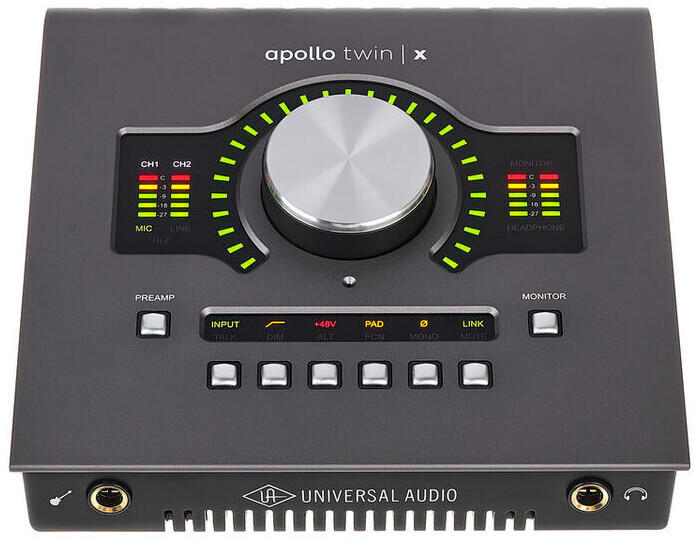

Number of outputs
The number of outputs determines the versatility and flexibility of connecting different audio devices simultaneously, such as speakers, headphones, mixers, and more. For beginners or those on a tight budget, entry-level audio interfaces typically provide a limited number of outputs, such as the Focusrite Scarlett Solo with a single main output. This is suitable for users who only require a simple setup with one listening device. For intermediate users seeking more flexibility, audio interfaces like the PreSonus Audio Box USB 96 provide more outputs, offering a stereo output pair as well as a headphone output, enabling users to connect multiple devices simultaneously. Pro-level audio interfaces like the Universal Audio Apollo x8 offer a higher number of outputs, typically with multiple output combinations, such as eight line outputs and stereo monitor outputs, catering to professionals requiring extensive connectivity options in recording studios or advanced setups.




Type of input/output connections (USB, Thunderbolt, etc.)
Different types of connections have varying benefits and limitations, so it's crucial to pick the one that suits your needs and setup.
One of the most popular types of connections for audio interfaces is USB. USB interfaces are widely available and compatible with most computers. They provide a solid connection and are capable of delivering high-quality audio. If you're looking for a reliable USB audio interface, the Focusrite Scarlett 2i2 (3rd Gen) is a great option. It features two XLR/TRS combo inputs, two balanced outputs, and supports USB 2.0 connectivity.
For those seeking even higher performance, Thunderbolt connections are the way to go. Thunderbolt interfaces offer faster data transfer speeds and lower latency compared to USB interfaces. They are especially popular among professional studios and musicians who require top-notch audio quality and processing capabilities. The Universal Audio Apollo Twin X Duo is an excellent audio interface that utilizes Thunderbolt 3 connectivity. It boasts two pristine Unison-enabled preamps, two line outputs, and built-in UAD-2 Quad processing power. Another notable Thunderbolt interface is the PreSonus Quantum 2626, which offers 26x26 I/O channels, eight PreSonus recallable XMAX preamps, and high-quality 24-bit/192kHz converters.



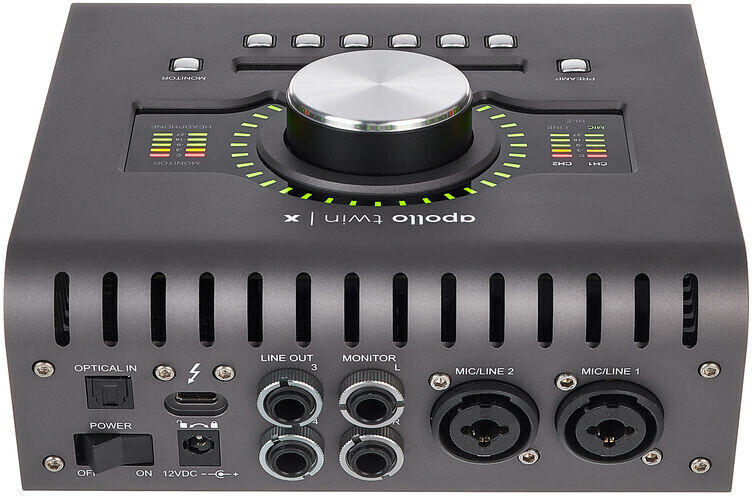
Remember to take into consideration your current setup and system requirements when deciding between USB and Thunderbolt interfaces. Ultimately, selecting the right type of connection will ensure seamless integration and optimal audio performance for your specific needs.
Sample rate
The sample rate refers to the number of samples of audio taken per second, and it determines the level of detail and resolution in the recorded audio. Higher sample rates generally produce better audio quality, so it is important to select an audio interface with a high sample rate for professional recording applications.
For example, the Focusrite Scarlett 2i2 (3rd Gen) audio interface offers a sample rate of up to 192kHz, which ensures exceptionally detailed audio recording. This interface is a great choice for those who require high-quality recordings, such as musicians, podcasters, and content creators. Another option would be the Universal Audio Apollo Twin MKII Duo, which offers a selectable sample rate of up to 192kHz. This audio interface is particularly designed for professional recording studios and offers top-of-the-line audio quality for the most discerning professional users.



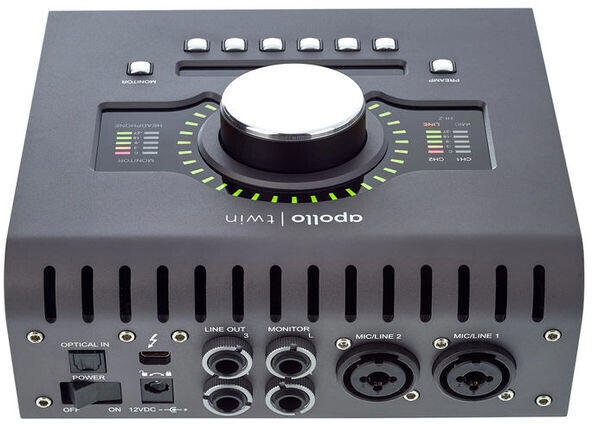
When considering the sample rate, it is important to keep in mind that personal preference and the intended use of the audio interface may influence the choice. However, for those who prioritize excellent audio quality and require the finest level of detail in their recordings, selecting an audio interface with a high sample rate is crucial.
Bit depth
Bit depth refers to the number of bits of information in each sample of audio data. In simple terms, it determines the resolution of the audio, or how accurately it can reproduce the dynamic range of the original recording. Most commonly, audio interfaces come in 16-bit or 24-bit options.
For entry-level audio interfaces, the Focusrite Scarlett 2i2 is a popular choice offering a 24-bit bit depth. It features two high-quality mic preamps and can record at resolution up to 24-bit/192kHz. Another great option in this category is the PreSonus AudioBox USB 96, offering a 24-bit/96kHz recording resolution and dual combo mic/instrument inputs.
Moving up into the mid-range tier of audio interfaces, the Universal Audio Apollo Twin MKII Duo is a powerhouse. It offers an impressive 24-bit/192kHz bit depth along with high-quality mic preamps and onboard UAD-2 DSP processing. The RME Babyface Pro FS is another standout choice, providing a 24-bit/192kHz resolution and pristine sound quality with impressive dynamic range.
In the high-end segment, gear like the Antelope Audio Orion Studio Synergy Core goes way beyond with its 24-bit/192kHz bit depth, FPGA and DPS processing integrated, and a plethora of I/O options. The Apogee Symphony Desktop is another top-tier option, boasting a 24-bit/192kHz resolution, advanced AD/DA conversion, and ESS Sabre DAC technology to deliver studio-grade audio.
Latency
One example of an audio interface with excellent latency performance is the Universal Audio Apollo Twin MKII, which boasts a remarkably low roundtrip latency of under 2 milliseconds. Another option could be the Focusrite Scarlett 2i2 3rd Gen, which also offers a low latency rate and features a super-low latency mode for even lower values.
In the market, audio interfaces can be segmented into two groups based on latency performance – entry-level interfaces and professional-grade interfaces. Entry-level options, such as the PreSonus AudioBox USB 96 and the Behringer U-Phoria UMC22, are great choices for beginner producers and musicians who need an affordable interface with decent latency performance. For professionals and demanding recording environments, high-end interfaces like the RME Babyface Pro FS, which features ultra-low latency and industry-leading stability, or the Apogee Symphony Desktop, which boasts incredibly low latency and tonal perfection, are ideal choices.

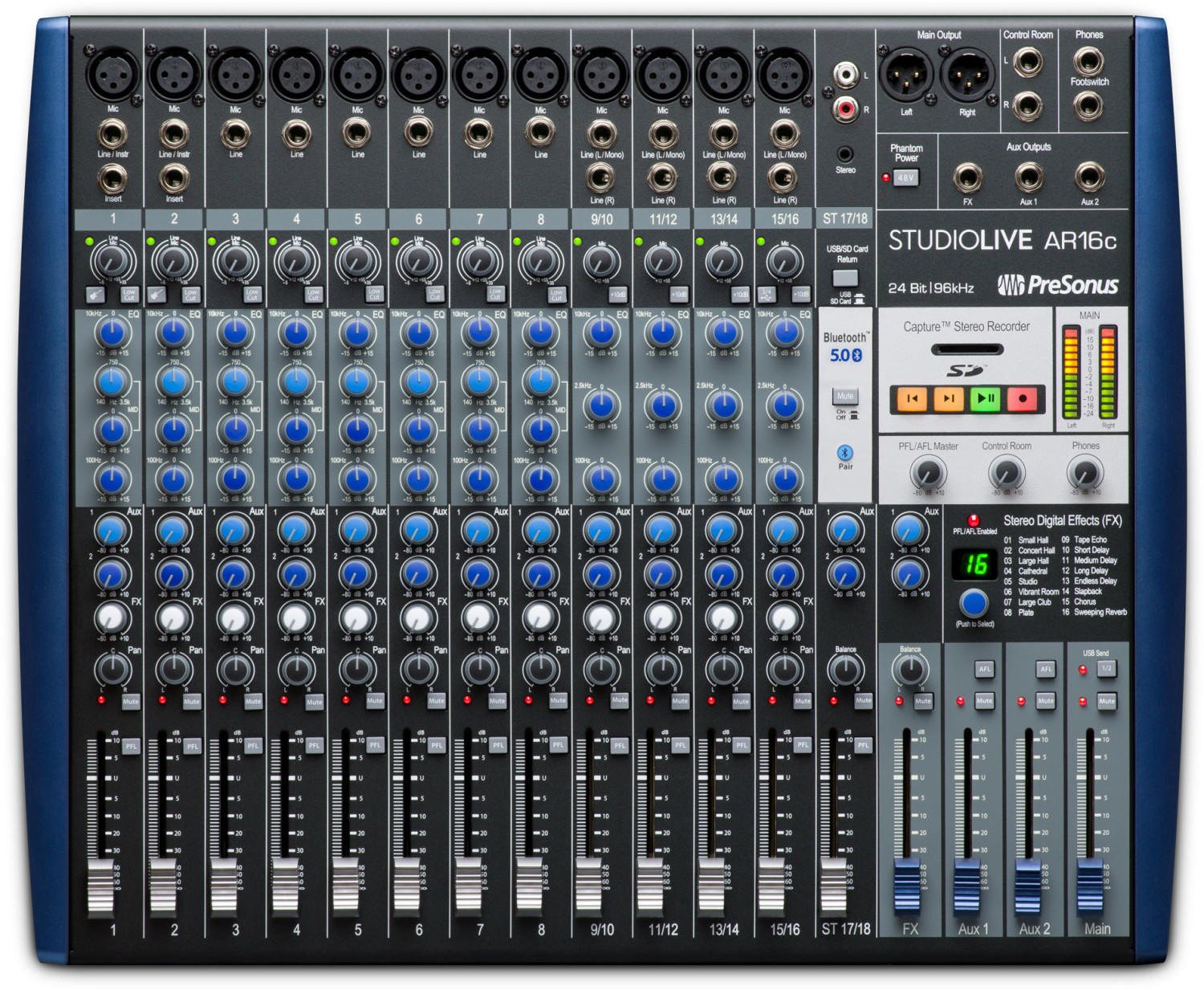
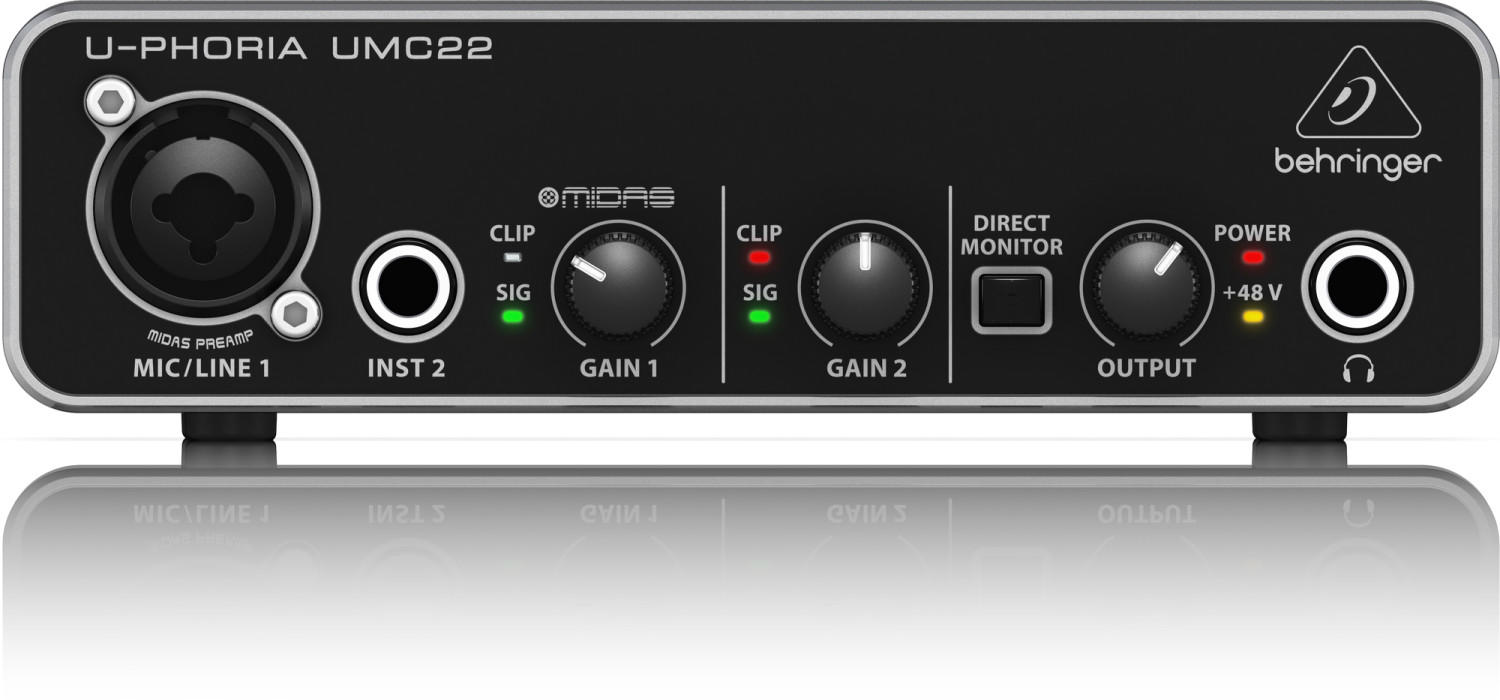
Preamp quality
A preamp is responsible for amplifying a weak input signal and ensuring clarity and fidelity. It plays a crucial role in capturing the nuances and dynamics of the audio source. Look for interfaces that boast high-quality preamps to ensure accurate and transparent sound reproduction.
There are several audio interfaces on the market that excel in the preamp department. In the mid-range segment, the Universal Audio Apollo Twin MkII offers impressive preamps with 129 dB dynamic range and <0.1% THD+N. For those on a budget, the Focusrite Scarlett 2i2 stands out with its natural-sounding preamps that provide a wide frequency range and low noise floor. Finally, if you're looking for top-of-the-line preamps, the RME Fireface UCX is a great option, boasting preamps with Class-A circuitry, up to 65 dB gain range, and stunning specifications such as 115 dB dynamic range and -97 dBu equivalent input noise.


Phantom power
Phantom power is essential for users who work with condenser microphones, as it provides the necessary power to operate these sensitive devices. It is usually delivered at +48 volts, and without it, condenser microphones cannot function properly. One example of an audio interface with phantom power is the Focusrite Scarlett 2i2. This compact and powerful audio interface not only offers phantom power, but also features a 24-bit/192kHz AD-DA converter, capturing audio with exceptional clarity. Another option is the Universal Audio Apollo Twin MKII Duo, a high-end audio interface with built-in UAD processing and enhanced sound quality. Ultimately, whether you opt for a budget-friendly option like the Scarlett 2i2 or invest in a premium interface like the Apollo Twin MKII Duo, make sure to choose an audio interface that provides phantom power to meet your microphone's demands.




MIDI compatibility
MIDI (Musical Instrument Digital Interface) technology enables the seamless communication between digital audio devices, allowing you to control and synchronize various instruments and devices. The Focusrite Scarlett 2i4 (3rd Gen) audio interface is an excellent option that offers MIDI connectivity. With its two combination inputs, four balanced outputs, and multiple MIDI ports, it provides a solid interface for recording and controlling MIDI instruments. Another notable option is the Universal Audio Apollo Twin X Duo audio interface. It not only features exceptional audio conversion and preamps but also offers MIDI connectivity for integrating with MIDI instruments and controllers. These products highlight the importance of MIDI compatibility while delivering exceptional audio performance.
Direct monitoring
This allows you to monitor audio signals with virtually no latency, which is crucial during recording sessions. One example of an audio interface that offers direct monitoring is the Focusrite Scarlett 2i2 3rd Gen. It features a super-low latency of just 2.74ms when using the direct monitoring option, ensuring that what you hear is in perfect sync with your instruments. Another option is the PreSonus AudioBox USB 96, which also offers direct monitoring with zero-latency. Both interfaces have easy-to-use controls for direct monitoring and can enhance your recording experience, giving you real-time feedback without any delay.




Loopback capability
Loopback allows you to capture the audio output of your computer and route it back into the interface for recording or streaming purposes. This is extremely useful for tasks such as podcasting, live streaming, or recording gameplay commentary. When looking for an audio interface with loopback capability, there are several options available on the market.
In the entry-level segment, a great option is the Focusrite Scarlett 2i2 (3rd Gen). This audio interface features loopback functionality and offers 24-bit/192kHz recording quality, ensuring high-fidelity audio capture. Another notable option is the PreSonus AudioBox USB 96, which delivers loopback capability combined with USB connectivity and two high-quality microphone preamps.




For those looking for a more professional setup, the Universal Audio Apollo Twin X DUO is worth considering. This audio interface not only provides loopback functionality but also features top-of-the-line A/D and D/A converters, Unison mic preamps, and real-time UAD processing. With an impressive 127 dB dynamic range, the Apollo Twin X DUO guarantees pristine audio capturing and playback. Another high-end option is the RME Babyface Pro FS, renowned for its excellent build quality and ultra-low latency performance, making it a preferred choice among professionals in the music industry.
Headphone output
This is especially crucial for musicians, producers, and DJs who rely heavily on their headphones for monitoring audio. Look for an interface that offers a dedicated headphone output with enough power to drive high-impedance headphones. A low output impedance is also important, as it ensures the sound quality does not degrade when paired with different headphones.
Some notable options in the market include the Focusrite Scarlett 2i2 (3rd Gen). It features a dedicated headphone output with a powerful headphone amplifier capable of driving even high-impedance studio headphones. Another excellent choice is the Audient iD4, which boasts a Class-A headphone output, providing pristine and transparent audio reproduction.


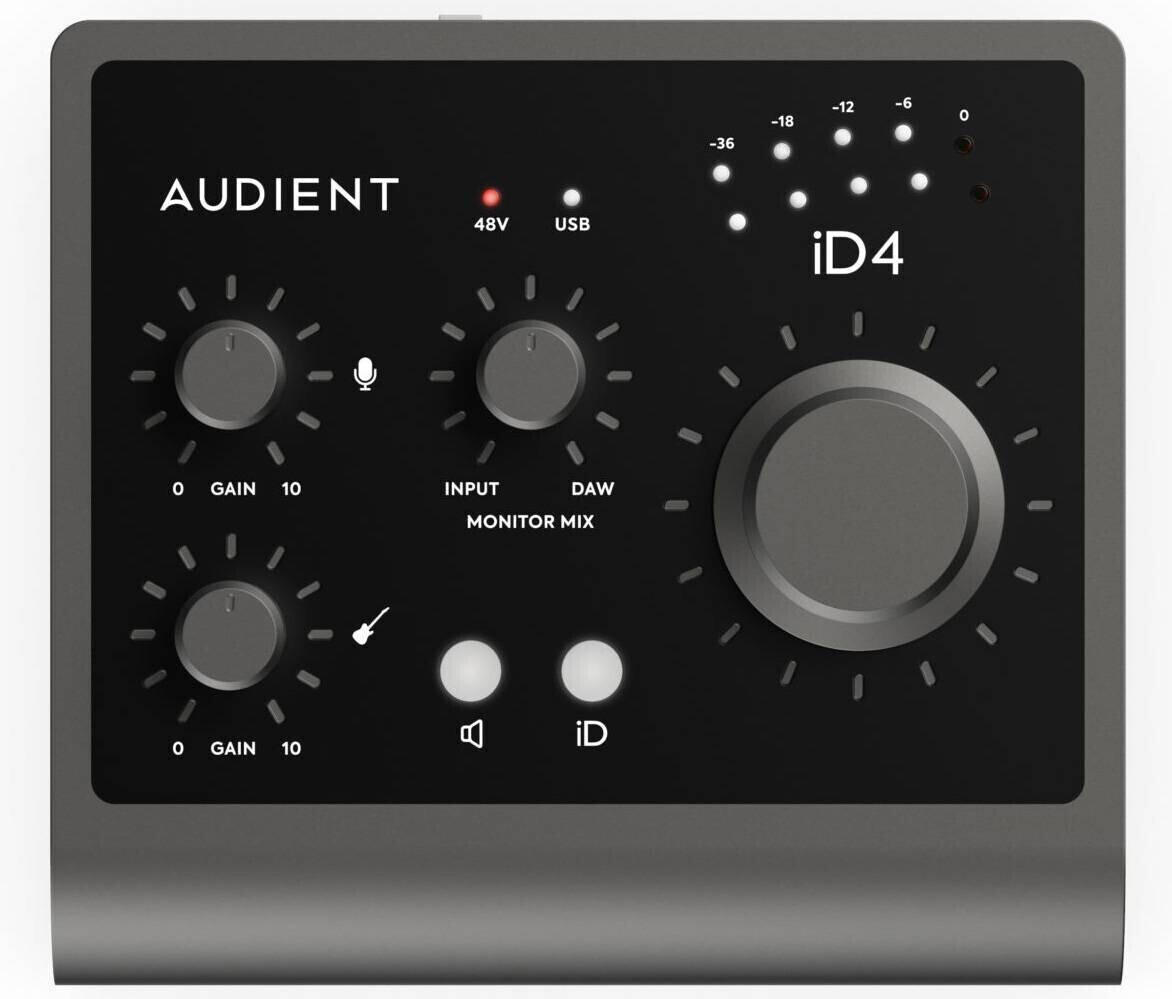
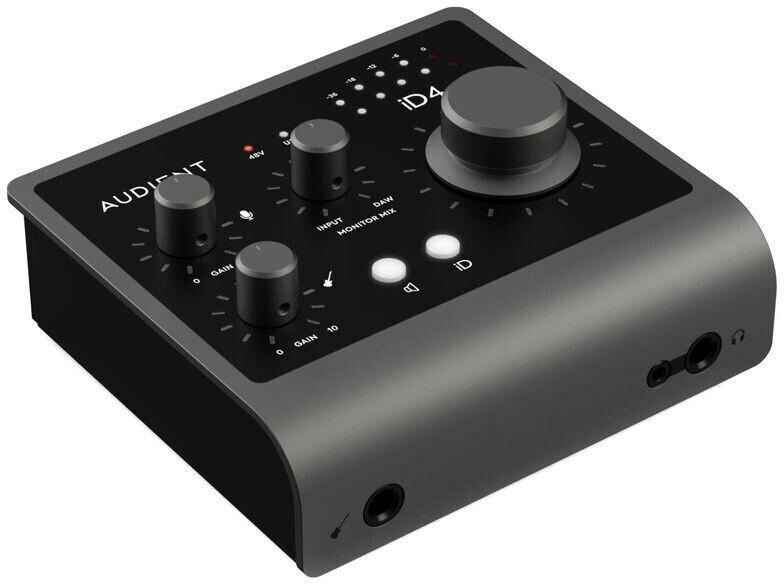
In terms of segmentation, audio interfaces can be divided into professional-grade, mid-range, and entry-level categories. Some examples for the professional-grade include the Universal Audio Apollo x4 and RME Babyface Pro. Mid-range options could include the PreSonus AudioBox USB 96 and Steinberg UR22C, while entry-level interfaces might include the Behringer U-Phoria UMC22 and Focusrite Scarlett Solo (3rd Gen). Each of these models offers varying levels of features and performance, making it crucial to determine one's specific needs and budget.

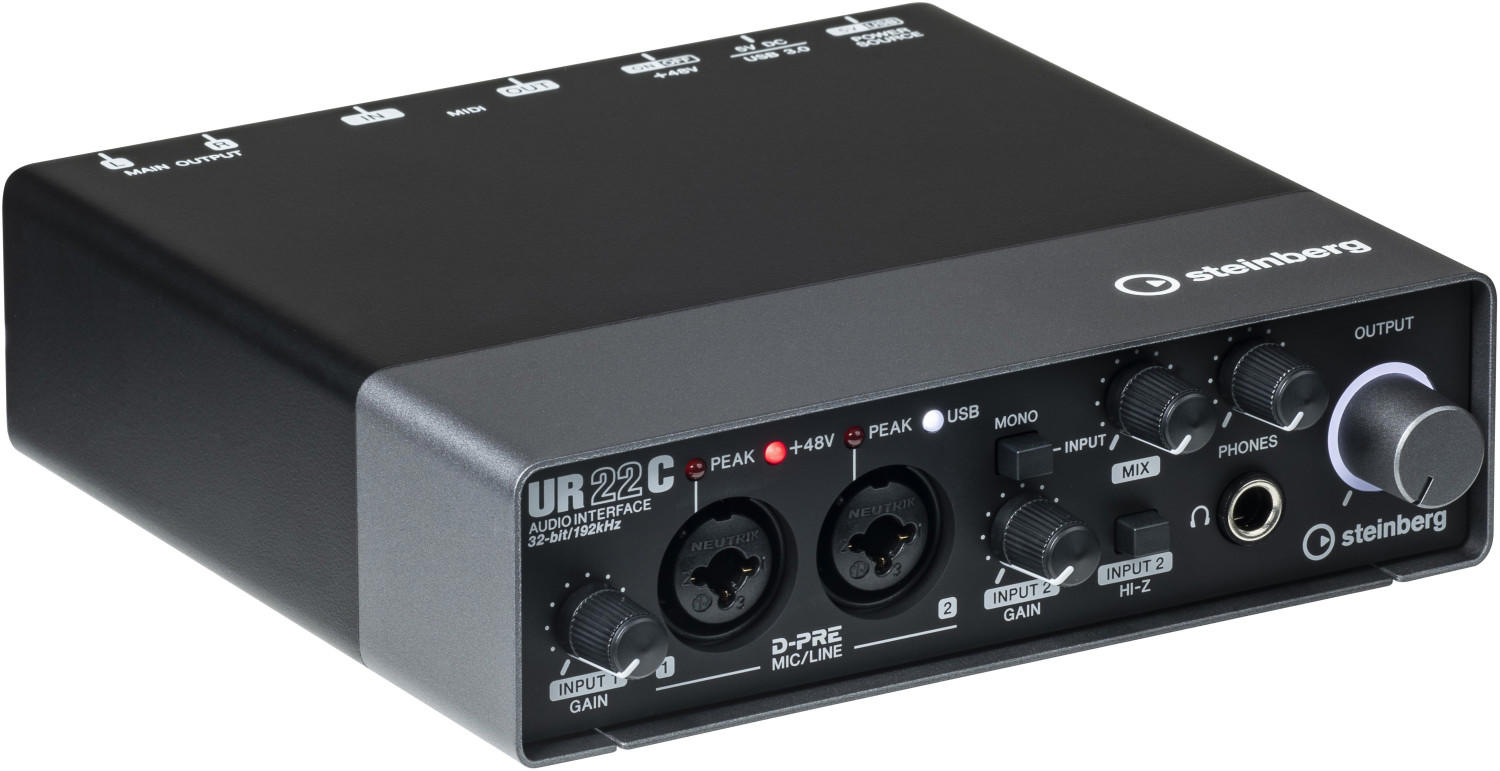


Built-in DSP effects
DSP (Digital Signal Processing) effects offer musicians and producers the ability to add high-quality effects to their recordings and live performances, without the need for external plug-ins or software. This opens up a whole new realm of creative possibilities and allows users to tweak their sound in real-time.
One example of an audio interface with an impressive range of built-in DSP effects is the Universal Audio Apollo Twin MKII. It comes with the UAD-2 DUO or UAD-2 QUAD Core processing, which provides a vast collection of vintage analog plugins, including EQs, compressors, reverbs, and more. This allows users to instantly apply coveted analog gear emulations to their recordings, making it an excellent choice for those seeking a professional sound.
Another option is the Focusrite Scarlett 18i20 3rd Gen, which features an impressive lineup of onboard DSP mix effects. The interface includes the renowned Focusrite Plugin Collective, offering additional creative options including compression, EQ, and reverb plugins. Additionally, the 18i20 3rd Gen boasts exceptional A-D and D-A conversion, ensuring pristine audio quality for your recordings and live performances.
Both the Audient iD14 and the PreSonus Studio 1824c offer a range of onboard effects with their built-in DSP features. The Audient iD14 features intuitive console-style mixing and comes bundled with the highly-regarded ARC software suite, providing world-class EQ, reverb, and compressor emulations. The PreSonus Studio 1824c, on the other hand, offers Fat Channel processing which includes vintage-style EQ and compression settings, as well as reverb and delay effects. These interfaces provide a great balance of features, performance, and affordability for home studios and producers looking to enhance their projects with built-in DSP effects.

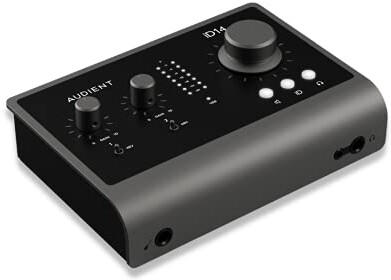
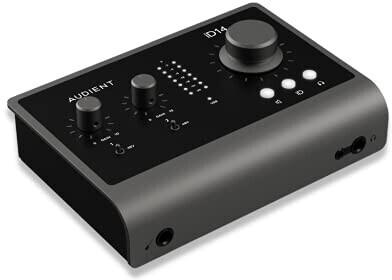
When choosing the best audio interface, the presence of built-in DSP effects can greatly enhance your recordings and performances. Quality-built interfaces, such as the Universal Audio Apollo Twin MKII, Focusrite Scarlett 18i20 3rd Gen, Audient iD14, and PreSonus Studio 1824c, can offer a versatile and professional-grade set of effects to elevate your sound to new heights.



Software included
The software that comes bundled with an interface can greatly enhance its functionality and ease of use. Some interfaces come with powerful digital audio workstations (DAWs) like Pro Tools or Ableton Live. These DAWs offer advanced recording, editing, and mixing tools, making them suitable for professional music production. For those looking for a more budget-friendly option, there are interfaces that come with lighter versions of DAWs such as PreSonus Studio One Artist or Steinberg Cubase LE. These versions offer limited features but are still capable of handling basic recording and editing tasks. Additionally, some interfaces include virtual instruments, effects plugins, and sample libraries, thereby providing users with a wide range of sounds and creative possibilities. Some notable audio interfaces with great software bundles include the Universal Audio Apollo Twin MkII, which comes with high-quality analog emulation plugins, and the Focusrite Scarlett 2i2 (3rd Gen), which includes both Pro Tools | First and Ableton Live Lite.

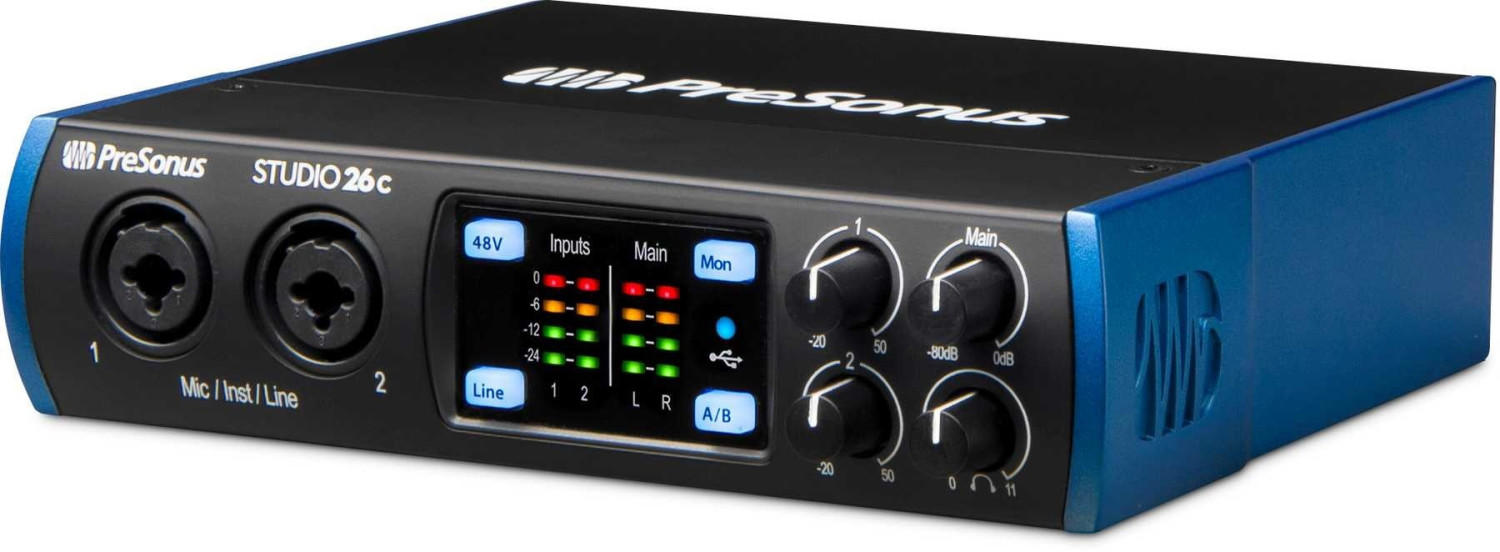

Integration with music production software
This aspect ensures a seamless workflow and efficient workflow for producers and musicians. A prime example of an audio interface with excellent integration capabilities is the Focusrite Scarlett 2i2. This popular interface boasts a low latency of 2.74 ms, allowing for real-time recording and monitoring without noticeable delays. It also features compatibility with major music production software such as Avid Pro Tools, Ableton Live, and Steinberg Cubase, making it a versatile choice for various digital audio workstations (DAWs).
Another notable audio interface is the Universal Audio Apollo Twin MKII Duo, which offers an integrated UAD-2 SOLO or DUO Core Processing, allowing for real-time processing of UAD plug-ins during recording and mixing. Its Thunderbolt connectivity further enhances speed and stability for seamless integration with music production software. Alongside, it supports a range of DAWs including Pro Tools, Logic Pro X, Ableton Live, and more. This audio interface bridging the gap between home studios and professional setups is highly regarded for its pristine sound quality and comprehensive software integration.




Overall audio quality
This refers to how clear, detailed, and accurate the sound reproduction of the interface is. Look for audio interfaces that have a high signal-to-noise ratio, meaning they provide a clean and noise-free signal. One excellent example of an audio interface known for its exceptional audio quality is the Universal Audio Apollo x4. It offers 24-bit/192 kHz sound quality and a dynamic range of 117 dB, ensuring pristine audio reproduction. Another option that delivers impressive audio quality is the Focusrite Scarlett 2i2 (3rd Gen), equipped with an improved preamp design and high-performance converters.
There are different market segments of audio interfaces that cater to varying needs and budgets. In the lower price range, the PreSonus AudioBox USB 96 and M-Audio AIR 192|4 are noteworthy options offering solid audio quality. In the mid-price range, the Apogee Quartet and RME Babyface Pro FS stand out with their top-notch sound reproduction. Moving to the higher end, products like the Antelope Audio Zen Tour Synergy Core and MOTU 8A provide exceptional audio quality and studio-grade performance.


Signal-to-noise ratio
SNR refers to the level of noise relative to the desired signal, and a higher SNR ensures cleaner recordings and better audio quality. It is measured in decibels (dB) and a higher value indicates less noise.
For studio-grade audio interfaces with exceptional SNR, the Universal Audio Apollo Twin MKII SOLO offers an SNR of 117 dB. It provides ultra-low latency and world-class audio conversion. Another notable option is the Focusrite Scarlett 2i2 (3rd Gen), which boasts an SNR of 111 dB, delivering professional and crystal-clear audio recordings. Both these interfaces belong to the mid-range segment, suitable for home studios and intermediate users. If budget is a constraint, the Behringer U-Phoria UM2 with an SNR of 94 dB offers good value for entry-level users.

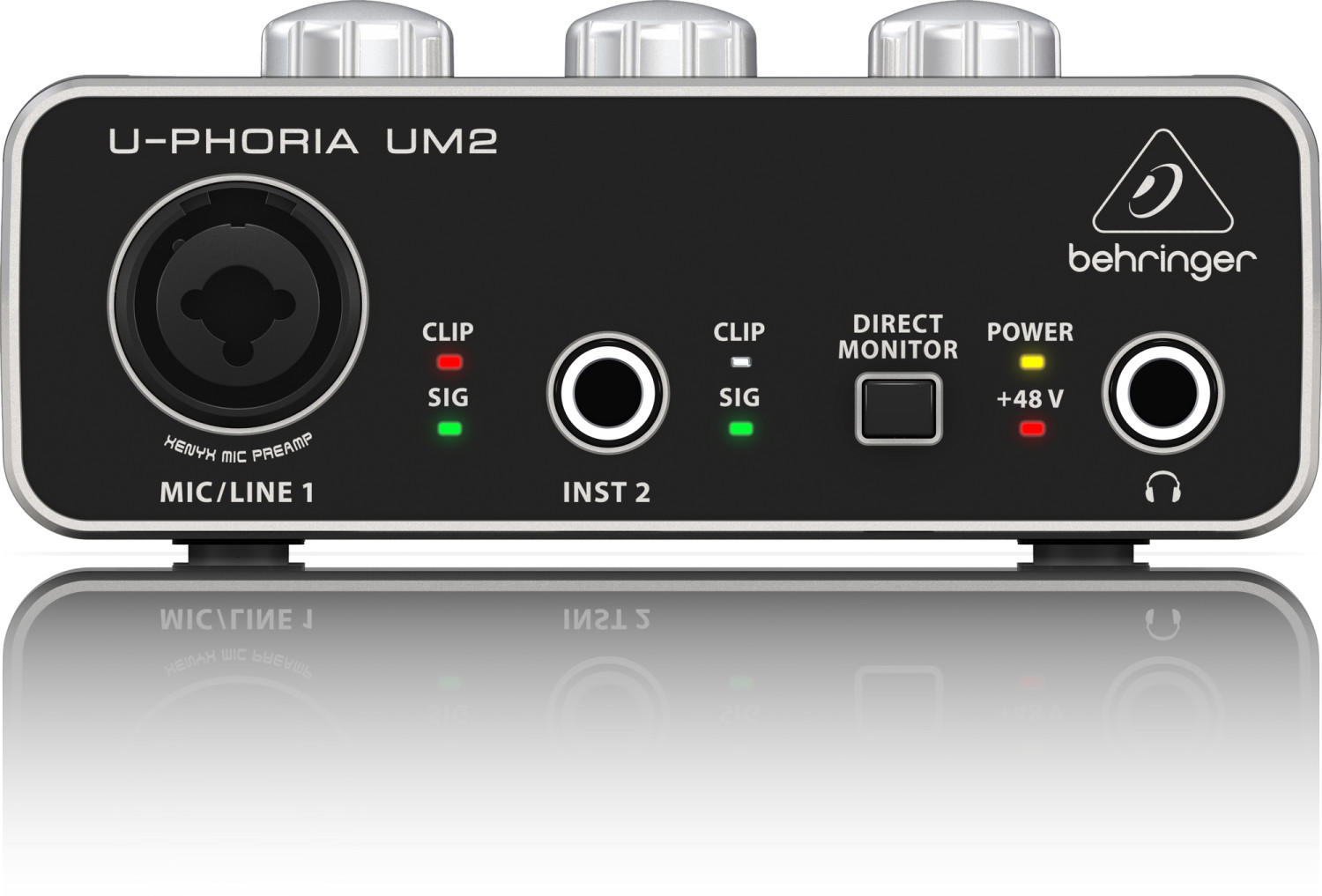
Frequency response
This refers to the range of frequencies that an audio interface can handle accurately. Ideally, you want an interface that has a wide and flat frequency response, which means it can accurately reproduce both low and high frequencies without distorting or attenuating any particular range.
In the entry-level segment, the Focusrite Scarlett 2i2 is a popular choice. It offers a frequency response of 20 Hz to 20 kHz, which covers the full range of human hearing. Moving up to the mid-range segment, the Presonus Audiobox USB96 provides a frequency response ranging from 20 Hz to 20 kHz with EIN (Equivalent Input Noise) ratings of -95 dBu, ensuring low noise levels and minimal distortion. For professional-grade audio interfaces, the Universal Audio Apollo Twin X boasts a frequency response of 20 Hz to 20 kHz with an astonishingly low THD+N (total harmonic distortion plus noise) rating of -114 dB. With these options available in various price ranges, you can choose an audio interface based on their frequency response to fit your specific needs.




Audio resolution
Audio resolution refers to the accuracy and detail with which an audio interface can capture and reproduce sound. It is typically measured in bits and represents the dynamic range that can be achieved. Higher bit rates result in better resolution and a more accurate representation of the original sound.
In the entry-level segment, a popular option for audio resolution is the Focusrite Scarlett 2i2 (3rd Gen), which offers a resolution of 24 bits/192 kHz. This interface provides clear and accurate audio capture for home studio recordings. Moving up to the mid-range segment, the Universal Audio Apollo Twin MKII Duo offers a more professional level of resolution with 24 bits/192 kHz, as well as the added benefit of onboard UAD processing for audio plugins. Finally, in the high-end segment, the Antelope Audio Zen Tour stands out with an impressive resolution of 24 bits/192 kHz, also featuring Antelope's renowned pristine clocking technology for exceptional audio quality. These interfaces provide a wide range of options to suit different audio quality needs and budgets.




Gain control
Gain control refers to the ability to adjust the input levels of your audio signals, ensuring optimum recording levels without distortion. An audio interface with a well-designed gain control feature allows you to boost or attenuate the signal coming from your microphone or instrument to achieve the desired recording level.
There are several audio interfaces available in the market that offer great gain control. In the entry-level segment, the Focusrite Scarlett 2i2 stands out with its clean manual gain controls that provide up to 56dB of gain and LED indicators for ensuring optimal recording levels. For more professional applications, the Universal Audio Apollo Twin MKII excels with its top-level preamps that deliver up to 60dB of gain, providing exceptional clarity and precise control over recording levels.


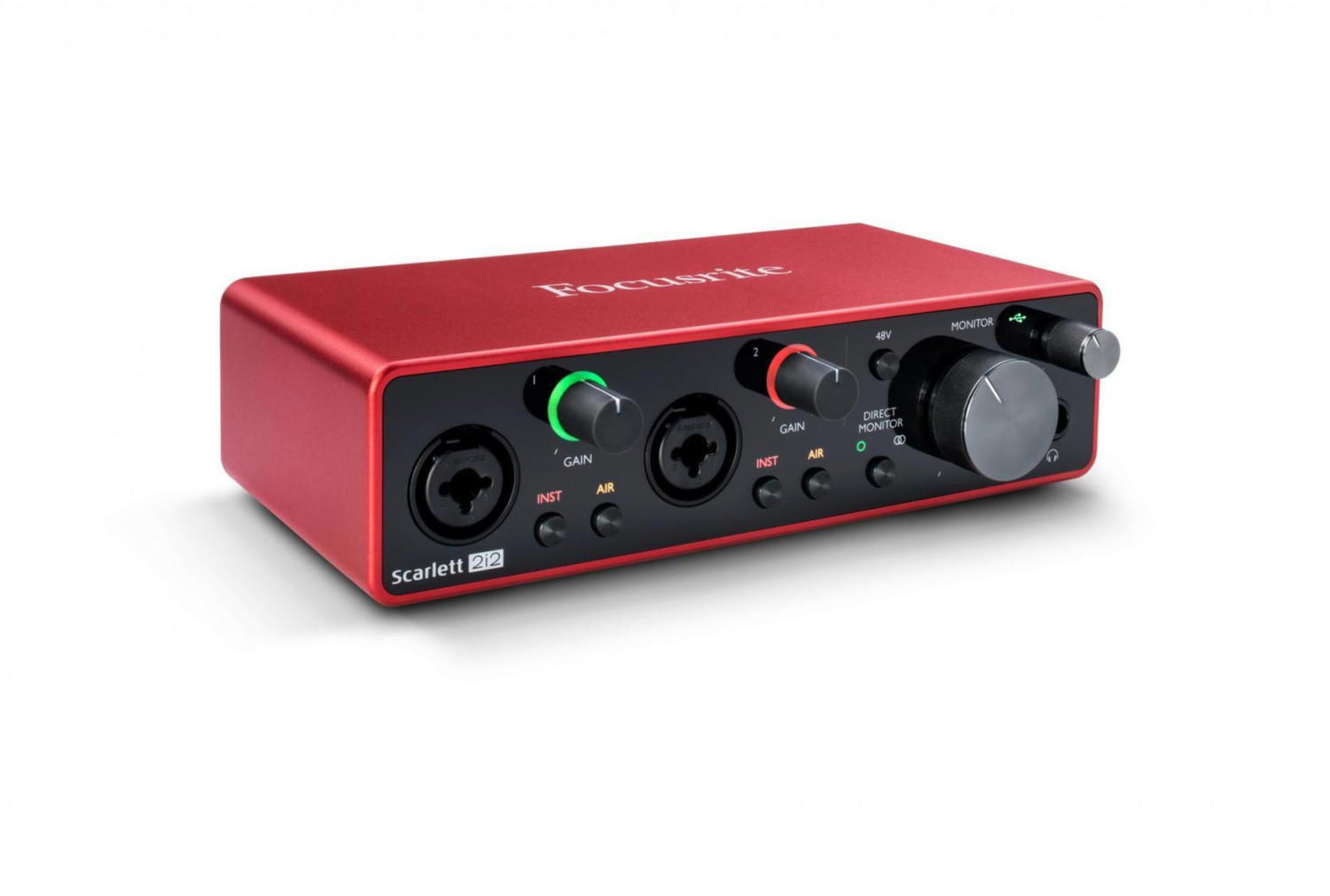
Monitor mixing controls
These controls allow you to adjust the balance between your audio sources, such as vocals, instruments, and playback tracks, which is essential for achieving a cohesive and professional sound. Look for an audio interface that offers multiple headphone outputs with separate volume controls, so you and your collaborators can individually control your personal monitor mixes.
One example of an audio interface with excellent monitor mixing controls is the Universal Audio Apollo Twin MKII. It features a dedicated Monitor knob that allows you to adjust the overall level of your monitors or headphones without affecting the recorded signal. Additionally, it offers an onboard DSP processor that enables real-time UAD processing, allowing you to apply effects and plugins at near-zero latency for superior monitoring and recording experience.
In the mid-range segment, the Focusrite Scarlett 18i20 (3rd Gen) is a popular choice. It offers comprehensive monitor mixing features, including a dedicated monitor control section with individual volume controls for multiple outputs. With its software control panel, you can create custom monitor mixes quickly and easily, ensuring each musician gets the perfect balance in their headphones.
For those on a tighter budget, the Behringer U-Phoria UMC404HD is a great option. It provides individual monitor mix controls for each channel, allowing you to tailor the sound to your preferences. Despite its affordability, it doesn't skimp on quality, boasting studio-grade 24-bit/192kHz audio resolution for crystal-clear monitoring.




Remember, when choosing an audio interface, the monitor mixing controls are crucial for achieving a great in-studio or on-stage monitoring experience.
Input metering
Input metering allows you to monitor and control the audio levels coming into the interface, ensuring accurate recording and preventing clipping. One audio interface that offers excellent input metering is the Focusrite Scarlett 2i2 Studio. Its front panel features two illuminated meters that clearly display the input levels of your microphone or instrument, allowing you to make precise adjustments. Another option worth considering is the PreSonus AudioBox USB 96, which boasts LED level indicators for the two input channels, providing a visual representation of your input signal. Both these interfaces offer comprehensive input metering to ensure optimal recording quality.
In terms of groups or segments, audio interfaces can be categorized as budget-friendly, mid-range, and high-end options. In the budget-friendly segment, the Behringer U-Phoria UM2 offers basic input metering with peak level indicators. For mid-range options, the Steinberg UR22C provides a detailed LED metering section with signal, peak, and MIDI indicators. Finally, in the high-end range, the Universal Audio Apollo Twin MKII offers high-resolution input metering with a 14-segment LED display showing precise input and output levels.




Output metering
Output metering provides you with essential visual feedback on the levels of your audio signal, ensuring accurate monitoring and preventing clipping. Look for interfaces that offer multiple types of metering, such as peak, RMS, and VU, giving you a comprehensive view of the signal dynamics. Some great options that offer excellent output metering are the Universal Audio Apollo Twin X, which displays clear RMS meters on its front panel, and the Focusrite Scarlett 2i2 (3rd Gen), which features six-segment LED meters to indicate signal level. For professionals needing advanced metering options, the RME Fireface UCX II offers a comprehensive range of digital and analog level meters, including peak, RMS, and EBU R128 values.




Input level adjustment
This allows you to control the volume of your audio signals as they enter the interface, preventing any distortion or clipping. Many audio interfaces offer multiple input channels with individual level controls, ensuring precise adjustment for each source. For instance, the Focusrite Scarlett 2i2 (3rd Gen) comes equipped with two balanced XLR/TRS combo inputs, each with a high-quality mic preamp and adjustable gain knobs. Another popular option is the PreSonus AudioBox USB 96, which provides two front-panel mic/instrument inputs with gain control and clip LED indicators, offering flexibility for recording and monitoring various sources.
For more advanced options, the market offers several segments to cater to diverse needs. In the entry-level segment, the Behringer U-Phoria UM2 presents a straightforward solution with its adjustable instrument/microphone input and zero-latency monitoring. Moving towards the mid-range segment, the Steinberg UR22C features two microphone preamps with switchable PADs and D-PRE Class-A headroom, ensuring precise level control even for high-gain instruments. In the high-end category, professional-grade interfaces such as the Universal Audio Apollo Twin MkII offer input level adjustments along with advanced DSP processing, allowing for studio-quality recordings and extensive control over signal routing.




Output level adjustment
This allows you to control the volume of the audio signal that is being sent from the interface to your speakers or headphones. Some interfaces may offer a simple level control knob, while others provide more advanced options such as dedicated output meters or the ability to switch between headphone and line level output. An example of an interface that offers excellent output level adjustment is the Focusrite Scarlett 2i2. It features a large output level knob on the front panel, providing precise control over the audio signal. Another option to consider is the Roland Rubix22, which offers an independent output volume control for both the headphone and line outputs. Both of these interfaces are highly regarded for their output level adjustment capabilities and are suitable for both home recording studios and professional settings.




Rack-mountable or portable design
Rack-mountable interfaces are the go-to choice for studio setups, as they can be easily mounted in a standard 19” rack. These interfaces typically feature a higher number of inputs and outputs, making them ideal for recording bands and multiple instruments simultaneously. Some popular rack-mountable options on the market include the Focusrite Scarlett 18i8, which offers 18 inputs and 8 outputs, the PreSonus AudioBox 1818VSL with 18 inputs and outputs, and the Antelope Audio Discrete 4 Synergy Core, boasting 4 inputs and 6 outputs. Alternatively, for those on the go or looking for a more portable solution, there are compact interfaces that offer a smaller form factor and increased mobility. These include the Universal Audio Arrow with 2 inputs and 2 outputs, the Apogee Duet featuring 2 inputs and 4 outputs, and the Focusrite Scarlett Solo, a compact interface providing 2 inputs and 2 outputs.


Size and weight
If you are working in a mobile or traveling setting, a compact and lightweight audio interface will be more convenient for transportation. For example, the PreSonus AudioBox USB 96 weighs just 1.94 lbs and has dimensions of 5.5 x 5.5 x 1.75 inches, making it an excellent choice for those constantly on the move. Another option is the Focusrite Scarlett 2i2 (3rd Gen), weighing only 1.32 lbs and measuring 1.8 x 6.3 x 4.7 inches. These audio interfaces are compact and lightweight, allowing you to easily fit them into your backpack or travel case. Additionally, the Apogee One audio interface is particularly small, weighing only 0.7 lbs and measuring a mere 2.18 x 4.85 x 1.89 inches, making it perfect for musicians and podcasters seeking a highly portable solution.




Bus-powered or external power supply
Bus-powered audio interfaces are powered directly from your computer's USB or Thunderbolt port, making them highly portable and convenient for on-the-go recording or live performances. They draw their power from the computer, eliminating the need for external AC power supply. Products such as the Focusrite Scarlett 2i2 3rd Gen and the PreSonus AudioBox USB 96 are popular bus-powered options that provide high-quality audio capture while remaining compact and travel-friendly.
On the other hand, some users prefer audio interfaces that come with an external power supply. These interfaces often offer additional features and enhanced power output, making them ideal for demanding recording or production tasks. External power supplies can provide more stable and reliable power to the interface, reducing the risk of audio artifacts or dropouts. Notable examples in this segment include the Universal Audio Apollo x8 Thunderbolt 3 and the RME Fireface UFX II, which cater to professional users requiring advanced connectivity options and industry-leading sound quality.




Analog-to-digital converter (ADC)
The ADC is responsible for converting analog audio signals into digital data that can be recorded or processed by your computer. A high-quality ADC can accurately capture the nuances of your audio, providing a clear and detailed recording.
There are several audio interfaces on the market that excel in this area. Some notable options include the Universal Audio Apollo Twin MKII, which utilizes a premium and transparent 24-bit/192 kHz ADC for pristine sound quality. Another excellent choice is the RME Babyface Pro FS, which boasts an ultra-low distortion ADC with a dynamic range of up to 118 dB. These products are part of a segment of audio interfaces that prioritize professional-grade ADC components. Alternatively, the Focusrite Scarlett 2i2 (3rd Gen) and PreSonus AudioBox USB 96 focus on providing a great balance between value and quality for entry-level or home recording setups, featuring competent ADC performance without sacrificing affordability.


Digital-to-analog converter (DAC)
One example of an audio interface with a high-quality DAC is the Apogee Duet 3. This interface features a class-leading ESS Sabre DAC with a dynamic range of up to 130dB and a sample rate of up to 192kHz. The DAC in the Duet 3 ensures accurate and detailed audio reproduction, providing a truly professional listening experience.
In the midrange segment, the Universal Audio Apollo Twin X stands out with its premium DAC capabilities. Equipped with class-leading AKM converters, it offers a dynamic range of up to 127dB and a sample rate of up to 192kHz. The Apollo Twin X delivers exceptional audio fidelity, making it a popular choice among professional musicians and producers.

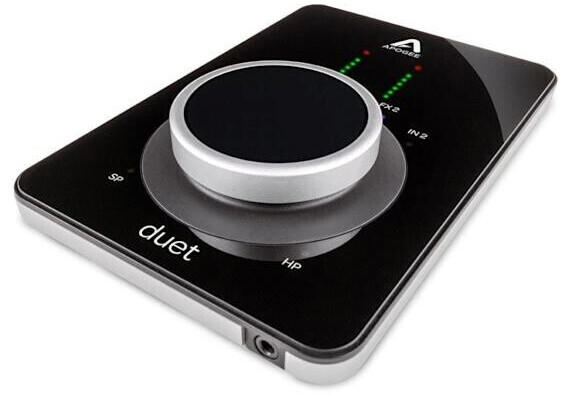
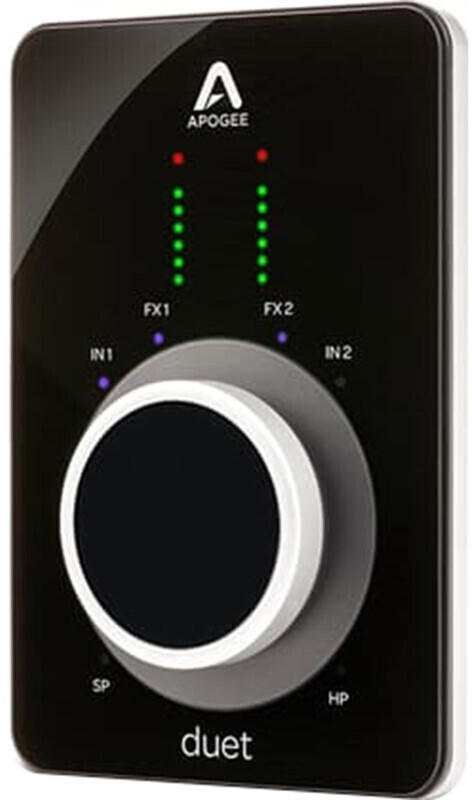
For those on a budget, the Focusrite Scarlett 2i2 is a reliable option with a good DAC performance. Its DAC has a dynamic range of up to 110dB and a sample rate of up to 192kHz, ensuring clean and clear audio playback. The Scarlett 2i2 is a great choice for home studios or beginners looking for an affordable yet capable audio interface.



User interface and controls
The ease of use and intuitive controls can greatly affect your workflow and productivity. Look for audio interfaces that offer a well-designed user interface with clearly labeled controls, buttons, and knobs. For example, the Focusrite Scarlett 2i2 (3rd Gen) features a front-panel design with easily accessible input and output gain knobs, direct monitoring switch for latency-free recording, and a headphone output knob for convenient level adjustments. Similarly, the PreSonus Studio 24c offers a straightforward front-panel layout with large dual-purpose knobs for main input and output level control.
Another aspect to consider is the availability and functionality of additional controls and features. Some audio interfaces include a dedicated control panel software that allows you to adjust in-depth settings like sample rate, buffer size, and routing options. The Universal Audio Apollo Twin MKII Duo offers a user-friendly software called Console, which not only provides control over the audio interface but also includes essential features like built-in console emulation and virtual monitor control with adjustable software sorround monitoring.

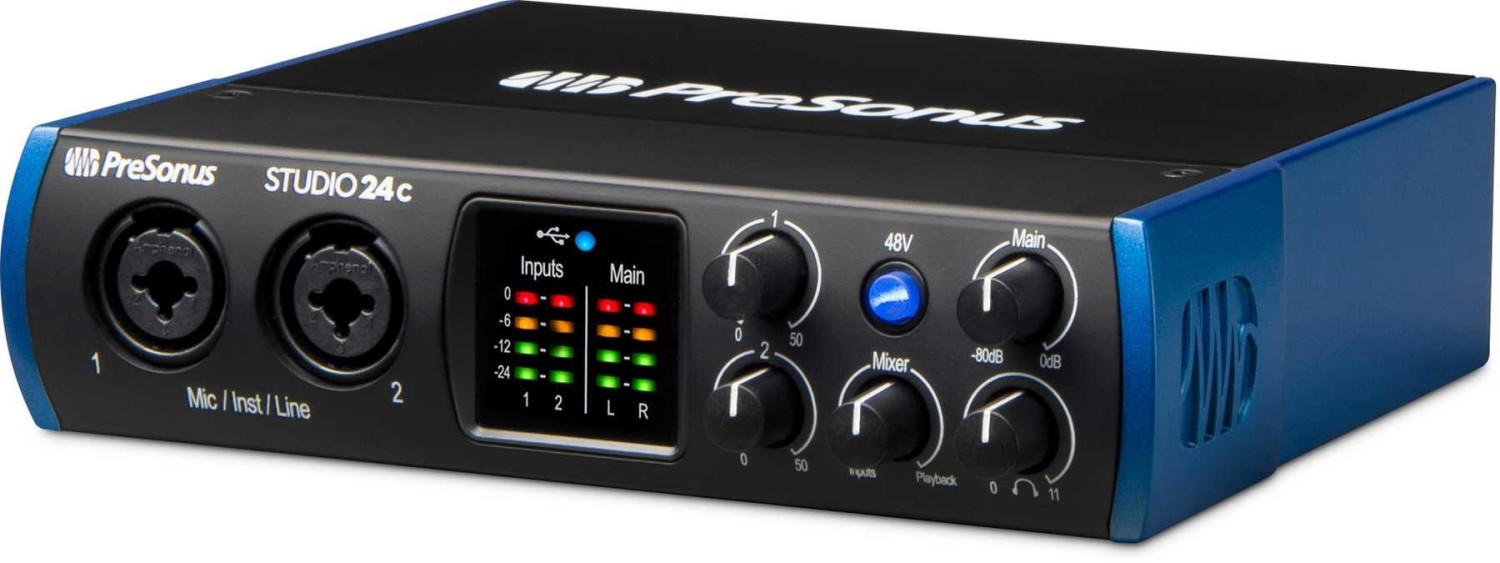

When it comes to grouping audio interfaces based on their user interface, we can categorize them as small, portable interfaces with limited controls and large, desktop interfaces with more extensive control options. Small and portable interfaces like the Zoom U-24 and Steinberg UR22mkII are designed for on-the-go musicians and offer a minimalistic yet functional front panel. On the other hand, desktop interfaces like the Audient iD44 and RME Fireface UCX provide a greater number of physical controls, dedicated LED meters for detailed monitoring, and even programmable channel strip functions, allowing for precise control over your recording and playback settings.



Durability
Investing in a robust and long-lasting device ensures that it will withstand the rigors of frequent use and transportation. There are several reliable products on the market that exhibit exceptional durability. One such example is the Focusrite Scarlett 2i2 (3rd Gen), which features a solid metal unibody enclosure. This tough build protects the internal components from potential damage caused by accidental bumps or drops. Another option to consider is the PreSonus AudioBox USB 96, which boasts a durable metal chassis that can withstand the demands of the road. These audio interfaces are not only built to last but also offer high-quality sound and recording capabilities.




Price
Fortunately, there are options available in various price ranges to suit different budgets and needs. In the lower price range, the Focusrite Scarlett 2i2 is a popular choice, offering high-quality preamps, low latency, and a simple user interface. Another affordable option is the PreSonus AudioBox USB 96, which features 24-bit audio resolution and two combo mic/line inputs. In the mid-range price segment, the Universal Audio Apollo Twin MkII Duo provides professional-grade sound quality with its onboard DSP processor and impeccable conversion. For those seeking top-tier performance, the Antelope Audio Orion Studio Synergy Core offers an advanced FPGA-driven audio processing platform and extensive connectivity options.


Variety of brands
Different brands offer unique features and specifications that cater to specific audio recording needs, making it important to research and compare the options before making a decision.
One well-known brand in the audio interface market is Focusrite. They are praised for their high-quality preamps, low latency, and compatibility with various operating systems. Focusrite offers a range of models to suit different budgets, including the Scarlett Solo and Scarlett 18i20.
Another popular brand is PreSonus, known for providing great value for money. Their audio interfaces like the Studio 24c and Studio 1824c offer high sample rates, low noise floor, and durable build quality, making them a great choice for both beginner and professional audio recording setups.
In the market, audio interfaces can be divided into different segments based on their features and capabilities. One segment focuses on compact portable interfaces, such as the Apogee ONE and Universal Audio Apollo Twin Solo. These interfaces are designed for on-the-go musicians and podcasters who need the flexibility to record anytime, anywhere.
Another segment caters to professional studios and project studios, with audio interfaces like the Universal Audio Apollo x8p, providing superior sound quality, extensive I/O options, and advanced signal processing features.
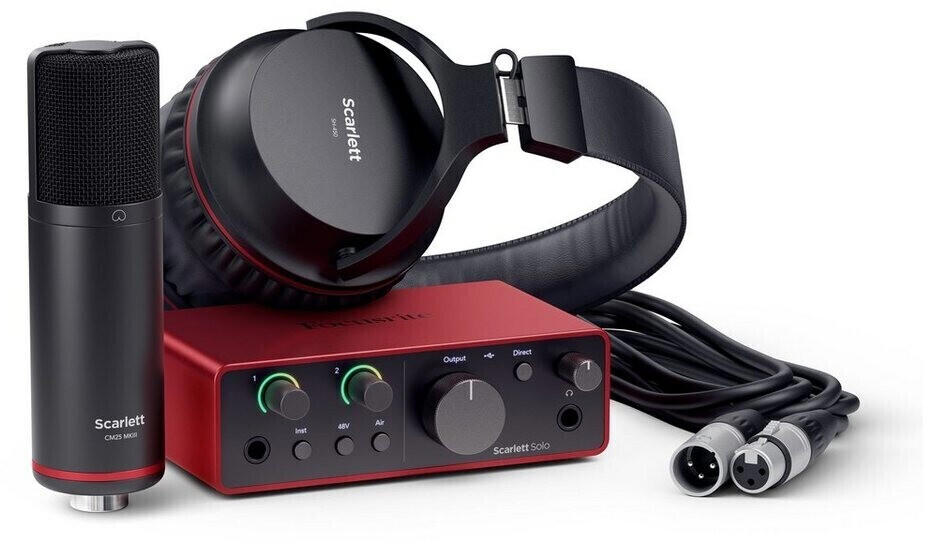




Remember, it is important to consider factors beyond just the brand name when choosing an audio interface. Factors like the number and type of inputs/outputs, sample rate and bit depth, compatibility with your recording software, and budget should also be taken into account to select the best and right audio interface for your specific needs.